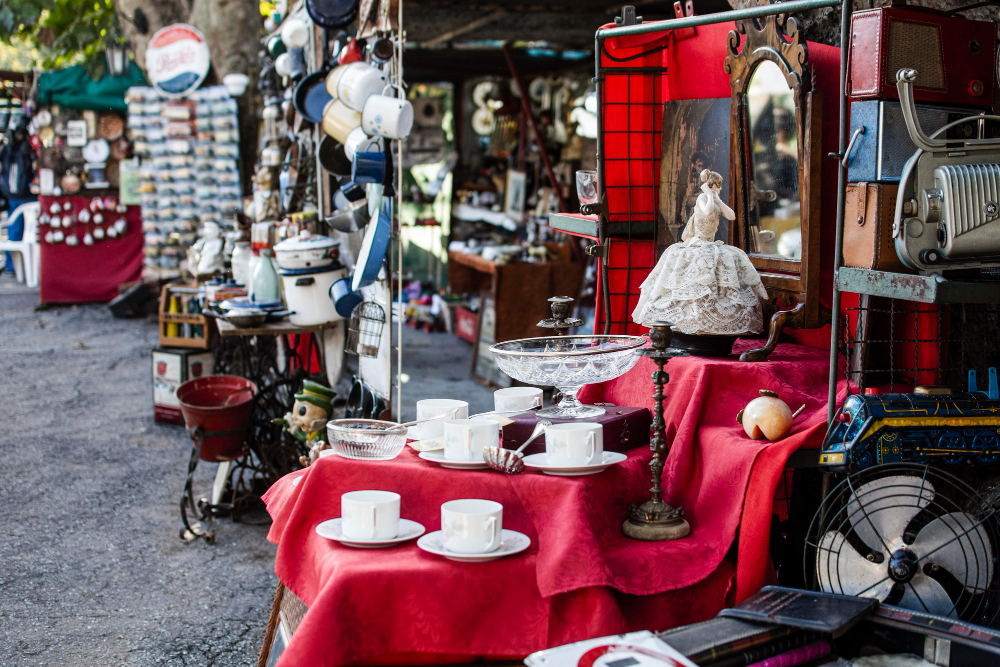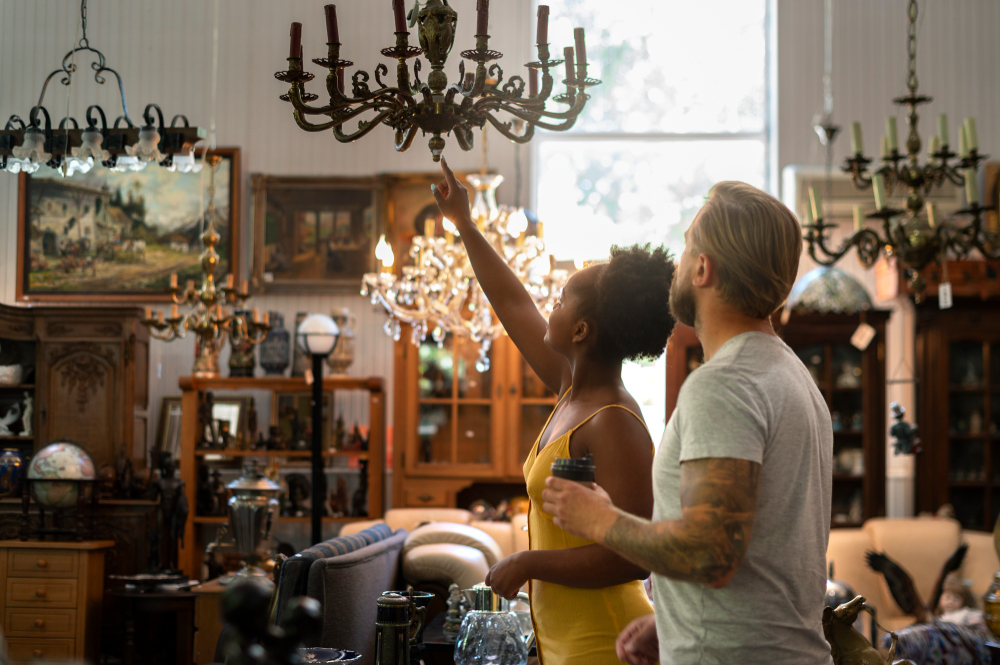Last updated on
Stepping into an antique fair is like embarking on a captivating journey through time. The moment you cross the threshold, you’re surrounded by a rich tapestry of history, where each piece whispers tales of bygone eras.
The allure of antique fairs lies in their ability to transport us to different epochs, offering a tangible connection to the past. With the guidance of veteran antique dealers, navigating these fascinating events becomes an even more enriching experience.
Antique fairs are treasure troves of historical artifacts, ranging from exquisite furniture to delicate porcelain, shimmering jewelry to aged manuscripts. Whether you’re a seasoned collector or a novice enthusiast, the excitement of discovering unique pieces and the invaluable insights shared by experts make antique fairs an enticing world to explore.
The antiquities showcased at these fairs come with stories, each waiting to be unraveled. But to fully appreciate the significance of these relics, one must be prepared.
This article aims to be your guide to making the most of your antique fair visit. It will provide essential insights into the world of antiques, including the significance of research, the benefits of having a game plan, and the art of negotiating for the perfect piece.
Join us on this journey through the past and let the wisdom of the veterans guide you as you explore the enchanting realm of antique fairs.
Do Your Research

When you step into the captivating world of antique fairs, knowledge becomes your most potent tool. Imagine wandering through a maze of historical treasures, each whispering stories of a bygone era. To fully appreciate these artifacts and make well-informed choices, it’s essential to invest time in research.
Familiarizing yourself with antique terminology, materials, and styles is like acquiring a secret language that unlocks the mysteries of the past. Whether it’s understanding the difference between Georgian and Victorian fireplaces and Art Nouveau and Art Deco pieces, knowledge equips you to appreciate the uniqueness of each piece.
Antique research extends beyond books and articles. It’s about immersing yourself in history and art. Visit museums, study period dramas, and engage with the vibrant online community of antique enthusiasts. The more you learn, the more confident you’ll become in distinguishing an 18th-century mahogany sideboard from a mid-20th-century imitation.
Being well-versed in antique terminology and materials is not just about impressing others with your expertise. It’s a journey of appreciation, enabling you to recognize the artistry, craftsmanship, and historical significance of each piece. In the world of antiques, knowledge isn’t just power; it’s the key to uncovering the hidden treasures of our heritage.
Have a Plan
The world of antique fairs can be as vast and intricate as the history it holds. Navigating it effectively requires a well-thought-out plan. Before stepping into the fairgrounds, take a moment to outline your goals and expectations. This is where the expertise of seasoned antique dealers can provide valuable insights.
Having a plan means you’re setting your compass in the right direction. It allows you to prioritize what you’re seeking and anticipate what might captivate you. Are you on the hunt for a specific era’s furniture, vintage jewelry, or perhaps ornate mirrors? Setting clear objectives ensures you make the most of your time and resources.
Furthermore, a well-crafted plan can keep your budget in check. Antique fairs can be a temptation, with countless treasures that might catch your eye. Defining a spending limit prevents impulsive decisions that could lead to overspending.
Your plan will be your guiding star in the midst of all these antique wonders. It’s your roadmap to a successful and rewarding fair experience, ensuring that you come away with cherished pieces that resonate with your passion for the past. With the expert guidance of antique dealers, your plan can lead you to extraordinary discoveries.
Be Prepared to Barter

One of the quintessential experiences at antique fairs is the art of negotiation. Bargaining for antiques is a time-honored tradition, and embracing it can be a rewarding part of your journey.
When you spot that exquisite antique piece you desire, it’s essential to remember that haggling is often expected. Don’t be shy or hesitant to engage in a polite negotiation with the seller. Keep in mind that many antique dealers are passionate about their items and may appreciate your genuine interest.
To navigate the world of bartering successfully, timing is key. You’ll often find that the best opportunities arise towards the end of the fair when dealers are more inclined to make deals to avoid packing their inventory back up. Be patient, and don’t rush your negotiations.
Respect and courtesy are the cornerstones of successful haggling. Even if you’re aiming for a lower price, maintain a friendly and polite demeanor. Compliment the piece, ask questions, and show appreciation for its history and craftsmanship. Sellers are more likely to be flexible with someone who displays genuine interest and respect for their wares.
Bring Cash
When navigating antique fairs, having cash on hand is a strategic move. Antique dealers often prefer cash transactions for several reasons. Firstly, it simplifies the process, eliminating the need for credit card fees or digital payment delays.
Moreover, cash transactions can provide you with more bargaining power. Sellers may be more willing to negotiate and offer better deals when presented with cash. It’s a sign of serious intent and can help secure your desired antique at a more favorable price. So, while carrying some cash might seem old-fashioned, it’s a smart move that could make your antique fair experience even more rewarding.
Know How to Spot an Original from a Fake
One of the most critical skills when attending antique fairs is the ability to differentiate between original antiques and reproductions or fakes. It can make the difference between a valuable find and a costly mistake. Here are some techniques to help you spot the real deal:
1. Examine the Construction
Authentic antiques often display a level of craftsmanship that’s hard to replicate. Look for signs of hand-crafted details, such as dovetail joints or mortise and tenon connections in wooden furniture. Imperfections like uneven surfaces or irregularities in the construction can be indications of authenticity.
2. Assess the Materials
Antique pieces are typically made from materials that might not be commonly used today. For example, hardwoods like mahogany, walnut, or oak were prevalent in antique furniture. Additionally, glass, ceramics, or metals might have unique characteristics that differ from modern reproductions.
3. Check for Authentic Markings
Many antiques come with markings, labels, or stamps that can provide essential information about their origin and age. Study these closely, and if they appear aged and consistent with the piece’s history, it’s a positive sign. Beware of items with brand-new or inconsistent markings.
4. Seek Expert Advice
If you’re uncertain about an item’s authenticity, don’t hesitate to consult with experienced antique dealers or appraisers. Their expertise and knowledge can help you make informed decisions and avoid costly mistakes.
5. Study Reference Materials
Prior to attending antique fairs, invest time in studying reference materials or online resources about specific types of antiques you’re interested in. Familiarizing yourself with the characteristics of genuine pieces can be an invaluable asset in spotting fakes.
Consult an Antique Expert When Unsure
In the world of antiques, uncertainty can be a costly companion. When you encounter a piece at an antique fair that leaves you in doubt about its authenticity, provenance, or value, turning to an experienced antique expert is a wise decision. Antique dealers, with their extensive knowledge and years of experience, can provide invaluable insights to ensure you make informed choices.
These experts have a keen eye for authentic pieces and can quickly spot red flags that might be overlooked by the untrained observer. They are well-versed in various styles, materials, and historical contexts, allowing them to accurately date and assess items. Whether it’s a unique piece of furniture, a vintage painting, or a rare collectible, their expertise can guide you in determining its true worth.
Moreover, antique dealers often have a network of industry contacts and access to reference materials that can aid in verifying the authenticity of an item. Their assistance can save you from costly mistakes and help you build a collection of genuine and valuable antiques. So, when in doubt, don’t hesitate to consult an antique expert to make the most of your antique fair experience.
The Takeaway
Antique fairs offer a delightful journey into the past, where you can discover unique treasures and create a link between history and your modern life. To make the most of these experiences, remember the key takeaways from our guide. Do your homework, have a clear plan, and be ready to engage in the art of negotiation. Don’t forget the power of cash, and equip yourself with the knowledge to distinguish between originals and replicas.
In this exciting world of antiques, the guidance of experts can be your compass. Their invaluable insights and verification of authenticity can ensure you invest wisely and build a collection of remarkable pieces. So, embark on your antique fair adventures with enthusiasm, knowledge, and a dash of haggling skill, and uncover the hidden gems that await you.
Table of Contents




